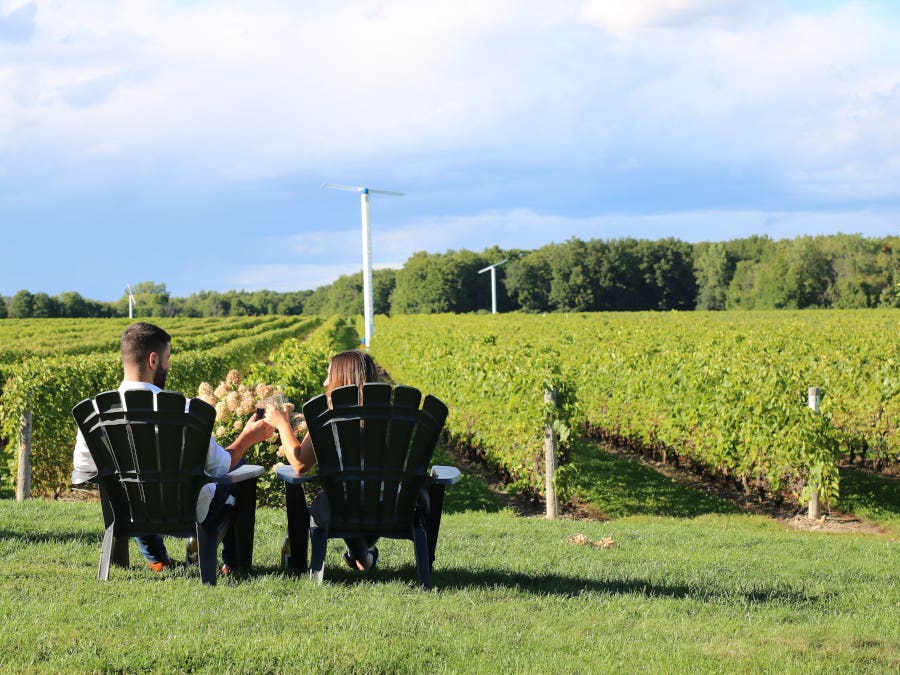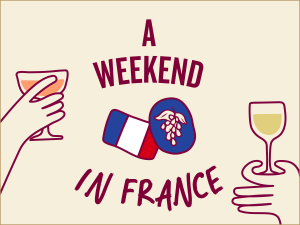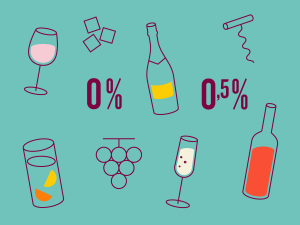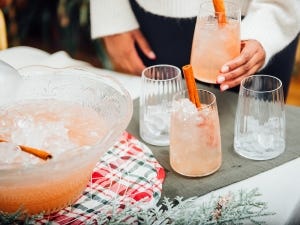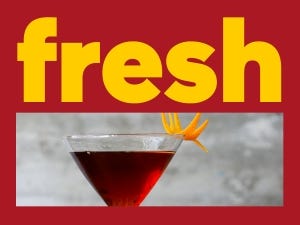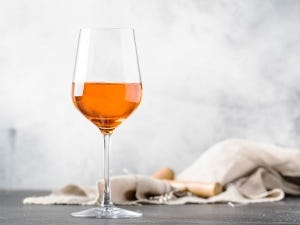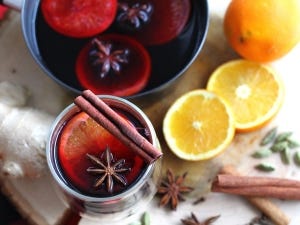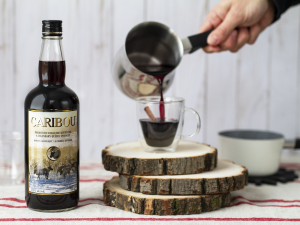The cat’s out of the bag: Quebec producers make excellent wines! According to the Conseil des vins du Québec, the province is made up of seven different wine-growing regions . With the fall colours and harvest season right around the corner, there’s never been a better time to explore our wine countries, support local vineyards and uncover Quebec’s hidden treasures.
Vallée-du-Richelieu
Just east of Montréal lies Vallée-du-Richelieu, a magnificent hilly region that extends from the St. Lawrence River to the Rivière Richelieu. To the south, this cyclists’ paradise reaches the foot of the Adirondack Mountains. On your next ride, take a break at one of the many local wineries. From family vineyards like Domaine St-Jacques to organic enterprises like Les Vignes des Bacchantes, icewine producers Domaine des Salamandres and Vignoble du Marathonien and its late harvest wines, there’s something for everyone.
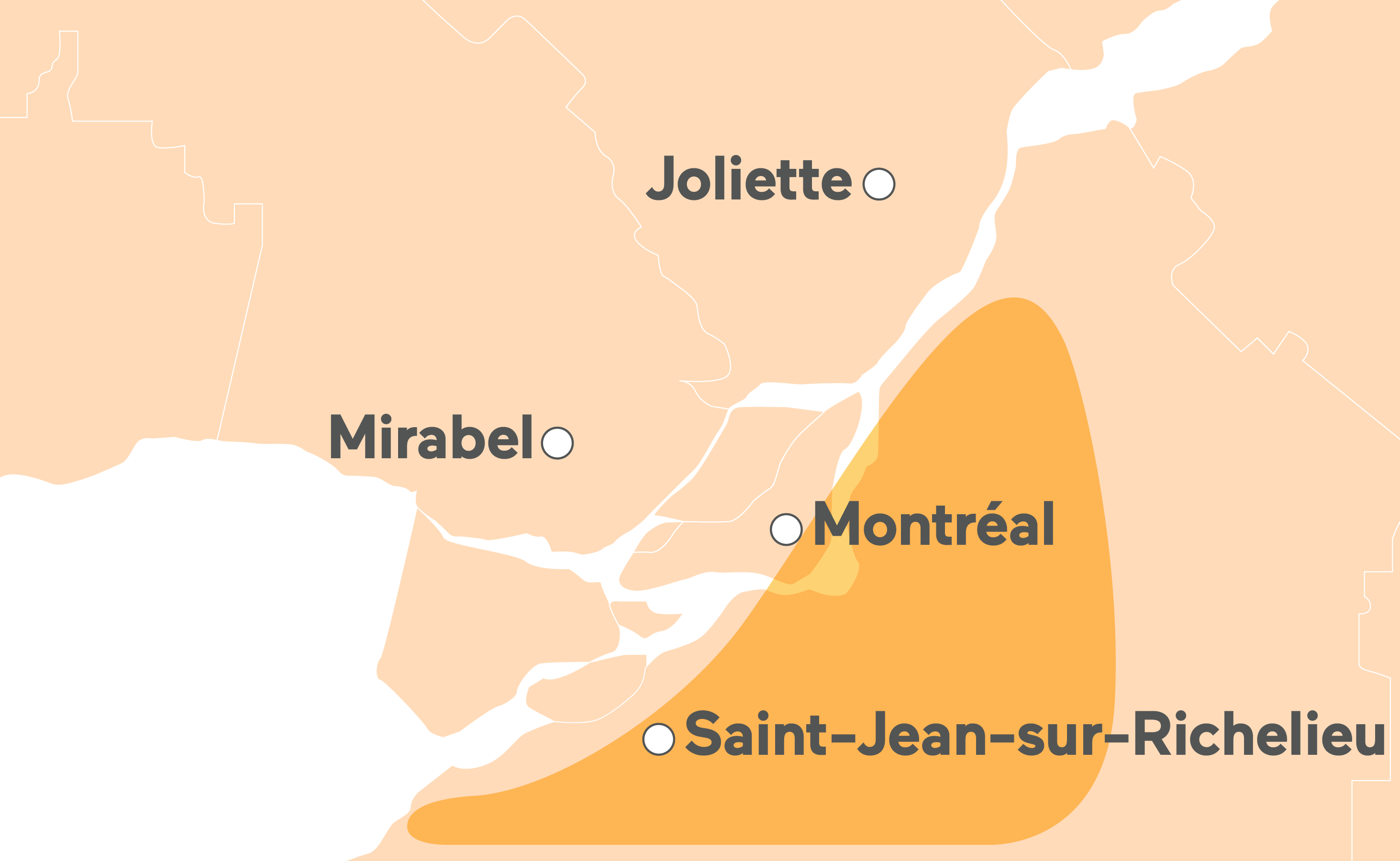

Piémont appalachien
Keep your bike handy, because the Appalachian piedmont is home to the legendary Brome-Missisquoi wine route, the Route des vins. Covering an area from Lake Champlain to Mont Sutton, it includes the iconic region of Dunham, cradle of Quebec winemaking. It’s easy to pedal or drive to discover a host of gastronomic stopovers. Fine cheeses, picturesque orchards and renowned wineries dot the landscape. Don’t miss Québec’s wine pioneer L’Orpailleur vineyard, the venerable Domaine Côtes d’Ardoise, the Leon Courville vineyard in the beautiful valley of Lac-Brome, Domaine du Ridge in Saint-Armand and Vignoble de la Bauge in Brigham.
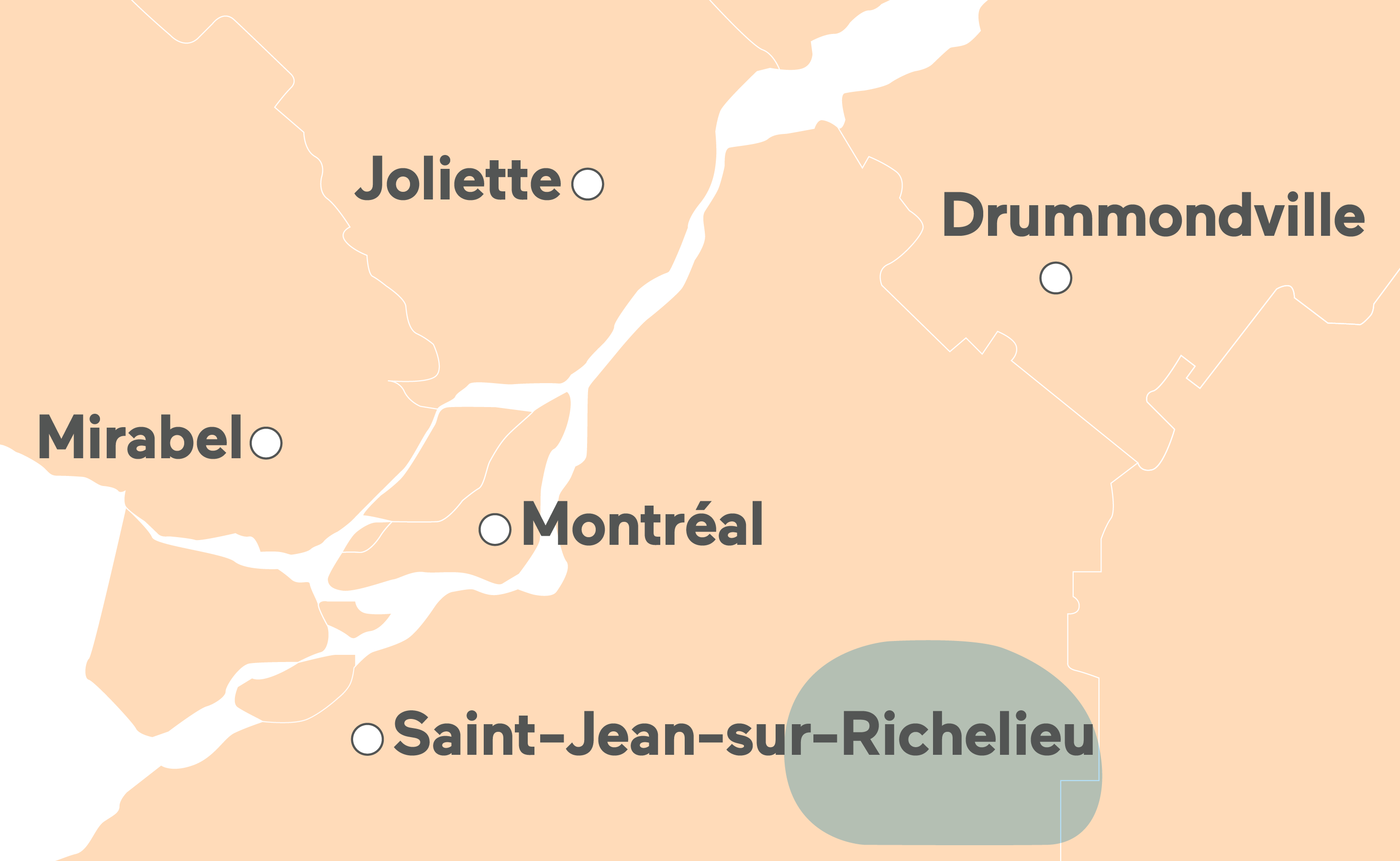

Deux-Montagnes
Deux-Montagnes, meaning two mountains, gets its name from the hills in Oka and Rigaud. Covering Mirabel, Vaudreuil-Soulanges, western Montréal and Laval, this wine-growing region is the perfect spot for a quick daytrip outside the city. It’s home to Rivière du Chêne vineyard in Saint-Eustache, which produces a dozen different wines. For its part, the renowned Les Vents d'Ange vineyard in Saint-Joseph-du-Lac will open to the public at the end of the summer. After your tastings, drive up to the Magasin de l’abbaye d’Oka abbey store to pick up everything you’ll need for an impromptu wine and cheese stop on the shores of one of the many waterways that flow through the area. Then, take the long way home and stop at Intermiel in Mirabel, which produces a range of exceptional meads, and Domaine LaFrance cidery and distillery.


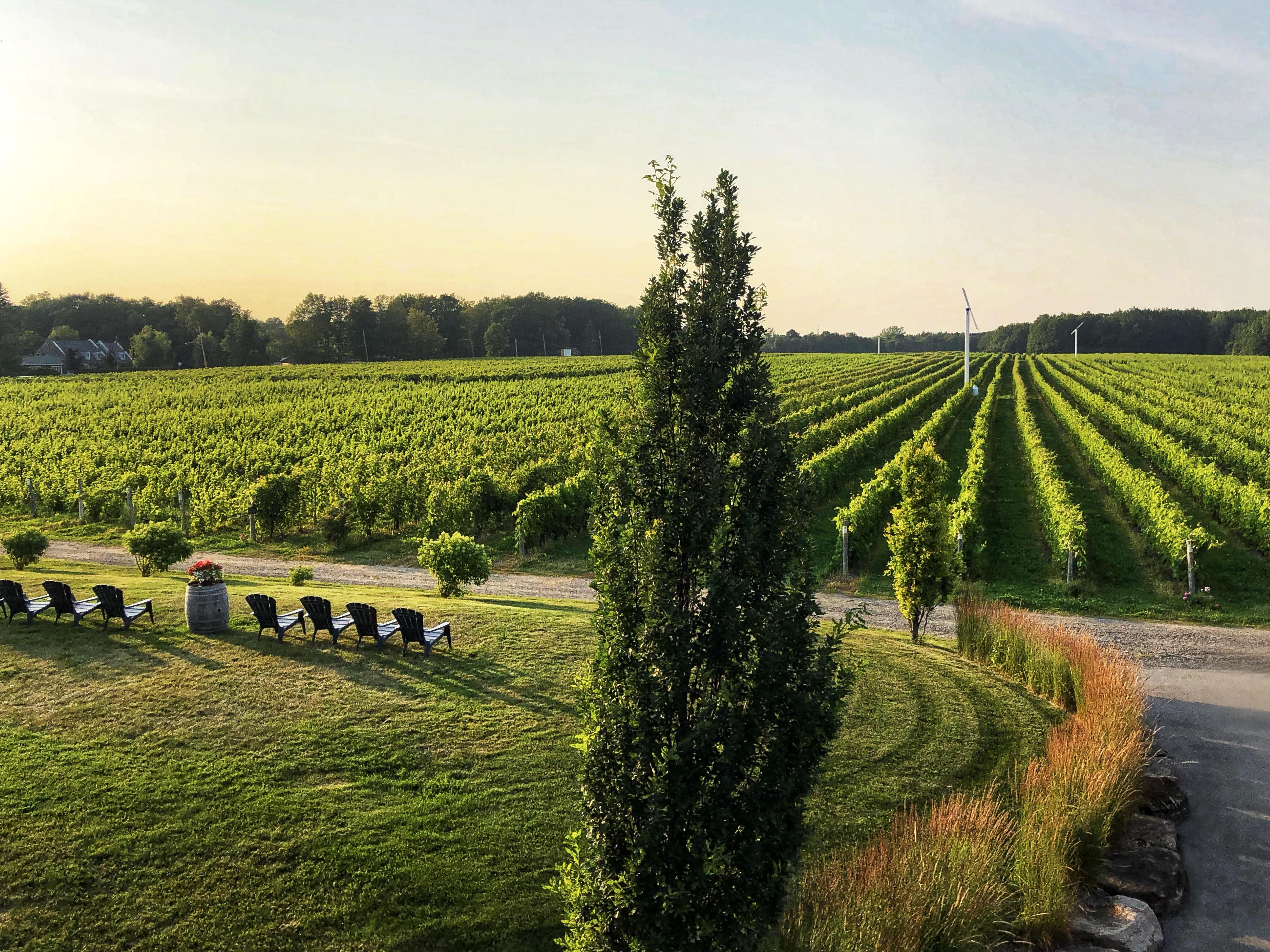

Versants Montérégiens
Named for the Montérégiennes mountains, the Versants Montérégiens region covers the territory from the St. Lawrence to the Appalachian Mountains, where the vineyards make the most of the gentle sandy slopes. Because every effort merits a reward, after hiking one of the ten local peaks, head to Domaine de Lavoie or Le Grand Saint-Charles to toast to the summit. If it isn’t too late in the day, stop in Rougemont, the Napa Valley of apples, whose orchards produce ciders of the highest quality. At Coteau Rougemont, enjoy breathtaking views and an unforgettable tasting experience.
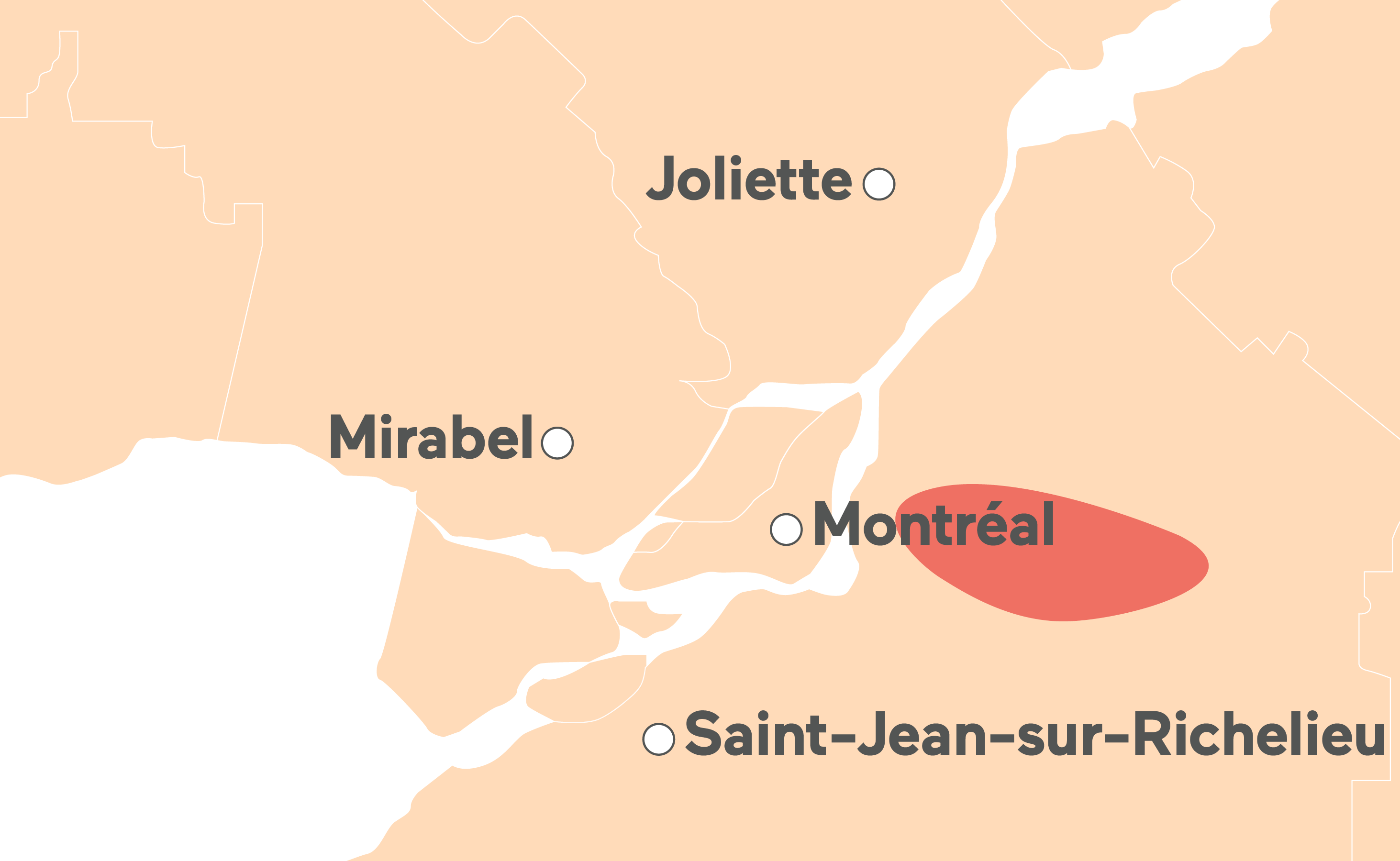

Plateaux des Appalaches
There’s just so much to do in the Plateaux des Appalaches wine-growing region: hike Mont-Orford, take a dip in Lake Memphremagog and, most importantly, visit some of the local vineyards. As the name suggests, the region is made up of different plateaus: the lower lying areas are in the Durham-Sud region all the way to Victoriaville and the higher ones are in the Magog and Sherbrook sector. Don’t miss La Halte des Pèlerins winery just five minutes outside downtown Sherbrooke, Le Cep d’Argent, which was the first to produce sparkling wines in Quebec, and Domaine Bergeville, the only producer of certified organic sparkling wines. Your next stop should then be Abbaye de Saint-Benoît-du-Lac, Fromagerie La Station or one of the region’s many cheesemakers to find the perfect pairings.
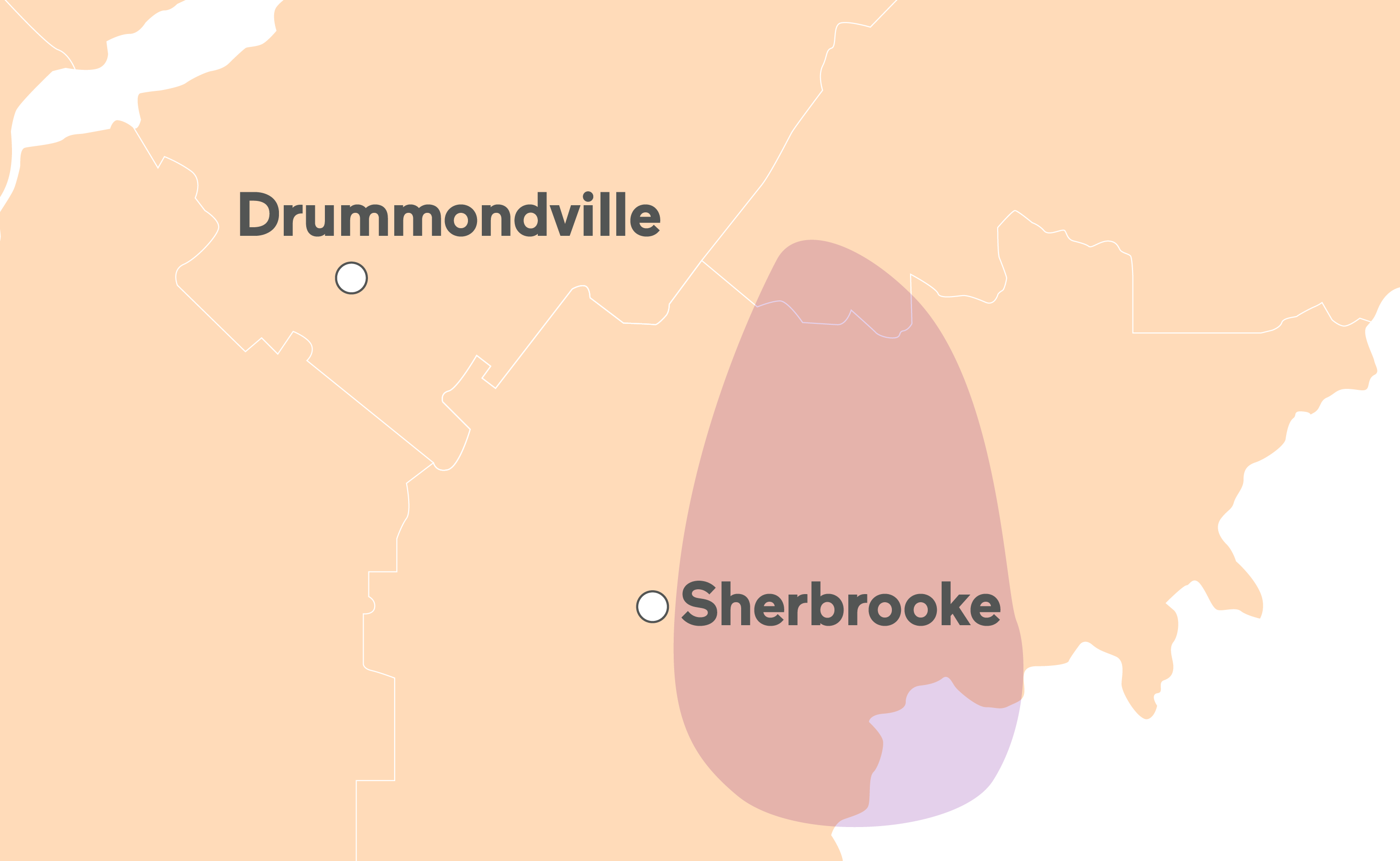

Lac Saint-Pierre
As far back as 8 000 BCE, Lake Lampsilis covered the entire region that today constitutes Lac Saint-Pierre and its northern and southern shores. Though the ancient lake has long since disappeared, the sediments it left behind provide nutrients for the grapes that grow in the region. Next time you’re in Joliette, take some time out at nearby Vignoble Saint-Thomas to try the many wines, from bubby to rosé. While you’re in the area, pop into Grand Dérangement distillery for some Saga, Québec’s very first certified organic gin.
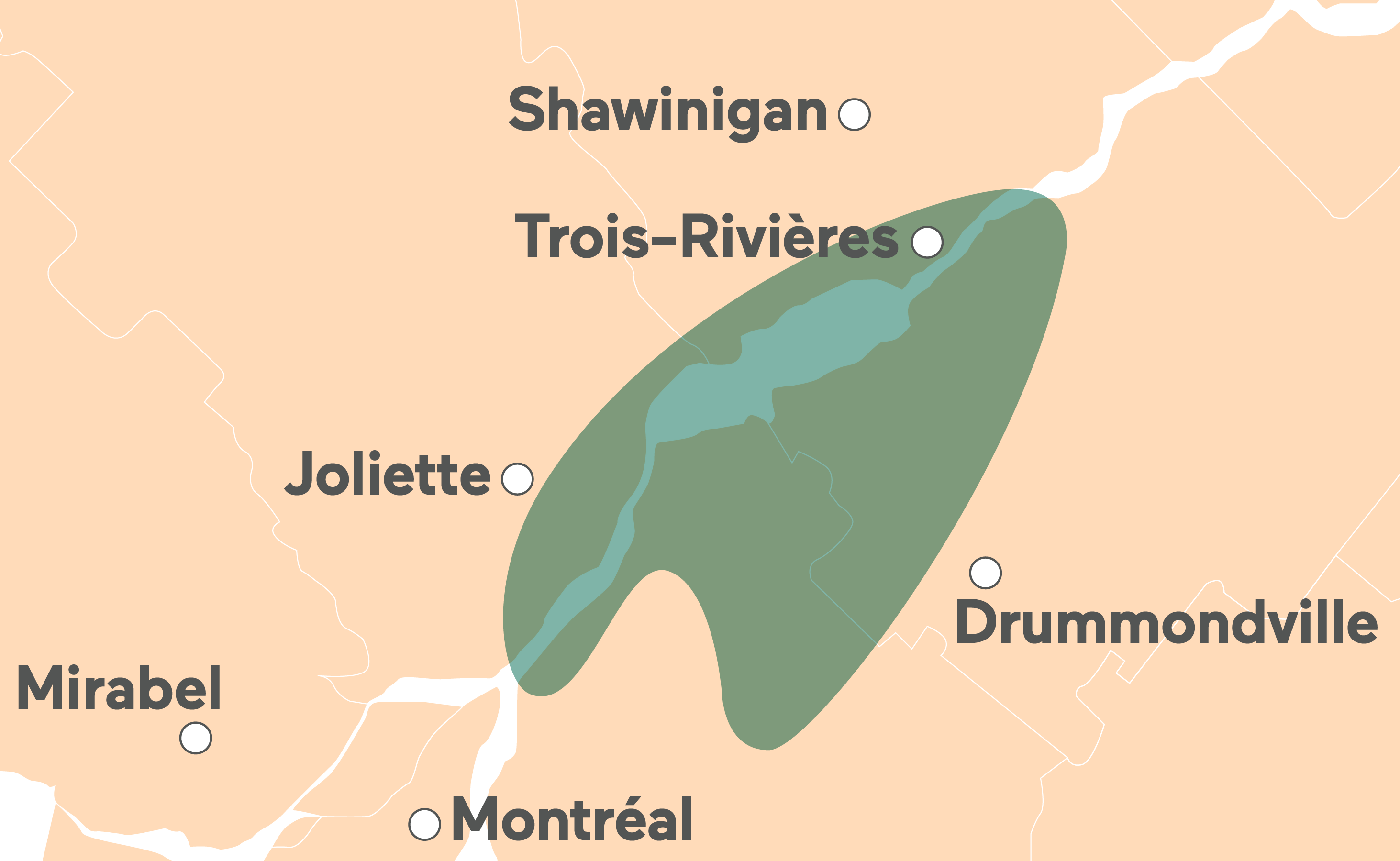

Quebec and the banks of the St. Lawrence
There are plenty of reasons to explore Île d’Orléans and its fantastic vineyards. With its pastoral landscape looking onto the St. Lawrence, the island has its own microclimate that is especially well suited to grape growing. How about a glass of white and some incredible views from the terrasse at Vignoble de Ste-Pétronille? Just a stone’s throw away is Vignoble Isle de Bacchus and its wonderful wines from Quebec grape varieties. While you’re there, get yourself a vanilla-black currant cone at Cassis Monna & Filles. Once you’ve left the island, explore the rest of the region and discover a range of other vineyards that are also worth the trip, like Domaine de l’Ange Gardien and Vignoble du Clos Lambert.
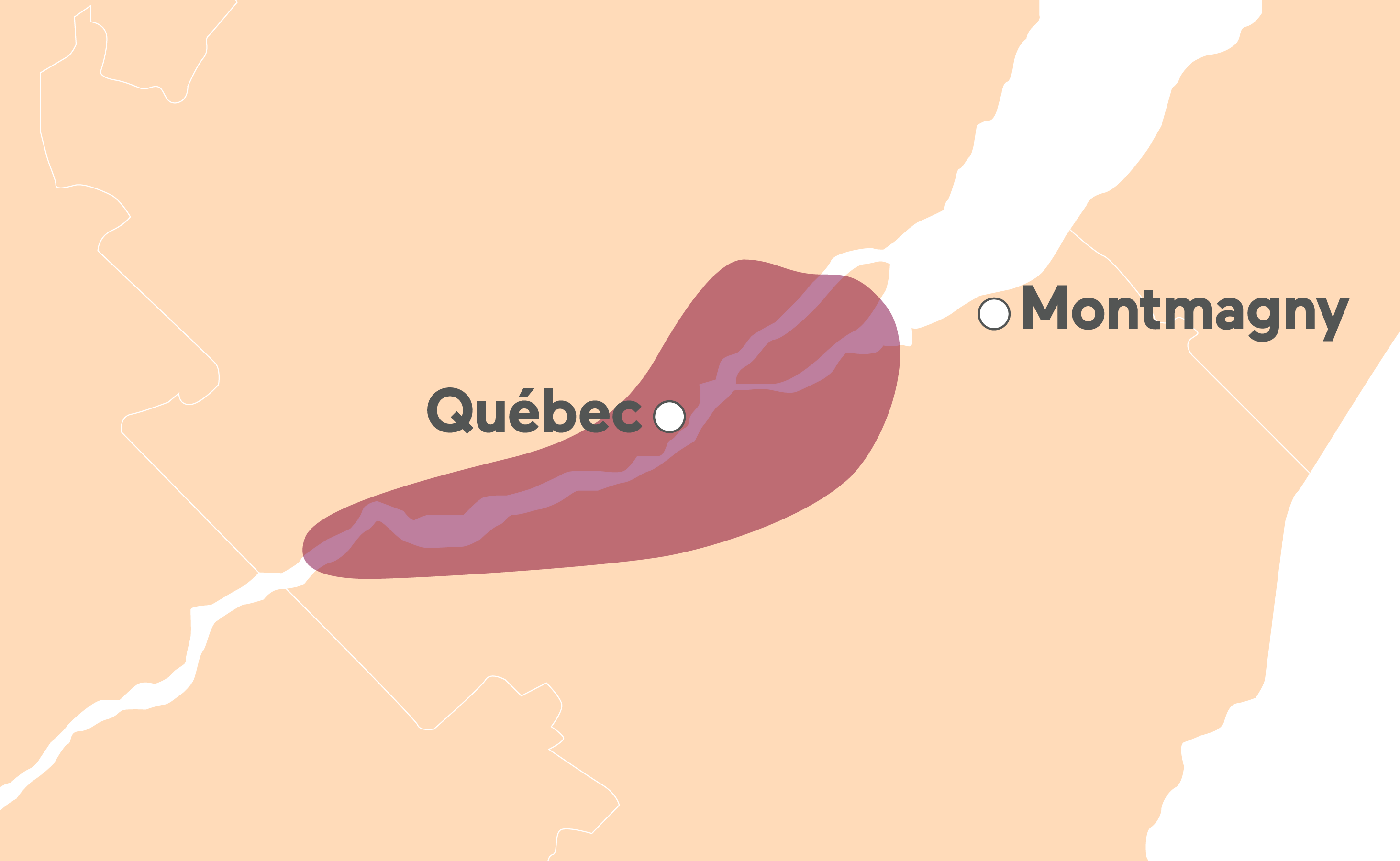

Cover picture: Rivière du Chêne Vineyard © Marie Charest
1 Source: Quebec Wine Council : https://vinsduquebec.com/en/wine-growing-regions/
 Access to SAQ Inspire personalized services and store inventories are unavailable at the moment.
Access to SAQ Inspire personalized services and store inventories are unavailable at the moment. Free in-store delivery with purchases of $75+ in an estimated 3 to 5 business days.
Free in-store delivery with purchases of $75+ in an estimated 3 to 5 business days. 
